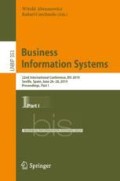Abstract
The cost of substance use regarding lives lost, medical and psychiatric morbidity and social disruptions by far surpasses the economic costs. Alcohol abuse and dependence has been a social issue in need of addressing for centuries now. Methods exist that attempt to solve this problem by recognizing inebriation in humans. These methods include the use of blood tests, breathalyzers, urine tests, ECGs and wearables devices. Although effective, these methods are very inconvenient for the user, and the required equipment is expensive. We propose a method that provides a faster and convenient way to recognize inebriation. Our method uses Viola-Jones-based face-detection for the region of interest. The face images become input to a Convolutional Neural Network (CNN) which attempts to classify inebriation. In order to test our model’s performance against other methods, we implemented Local Binary Patterns (LBP) for feature extraction, and Support Vector Machines (SVM), Gaussian Naive Bayes (GNB) and k-Nearest Neighbor (kNN) classifiers. Our model had an accuracy rate of 84.31% and easily outperformed the other methods.
Access this chapter
Tax calculation will be finalised at checkout
Purchases are for personal use only
References
O’Connor, P.G., Samet, J.H.: Substance Abuse. J. Gen. Intern. Med. 17, 398–399 (2002)
NIDA: Drugs, Brains, and Behavior: The Science of Addiction, 1 July 2014. https://www.drugabuse.gov/publications/drugs-brains-behavior-science-addiction/addiction-health. Accessed 29 Apr 2018
Fan, Y., Zhang, Y., Ye, Y., Li, X., Zheng, W.: Social media for opioid addiction epidemiology: automatic detection of opioid addicts from twitter and case studies. In: Proceedings of the 2017 ACM on Conference on Information and Knowledge Management, Singapore (2017)
Mirielli, E., Webster, L.: Modeling alcohol absorption and elimination from the human body: a case study in software development: nifty assignment. J. Comput. Sci. Coll. 30, 110–112 (2015)
Toroghi, M.K., Cluett, W.R., Mahadevan, R.: Multiscale metabolic modeling approach for predicting blood alcohol concentration. IEEE Life Sci. Lett. 2, 59–62 (2016)
Arnold, Z., LaRose, D., Agu, E.: Smartphone inference of alcohol consumption levels from gait. In: 2015 International Conference on Healthcare Informatics, pp. 417–426 (2015)
Aiello, C., Agu, E.: Investigating postural sway features, normalization and personalization in detecting blood alcohol levels of smartphone users. In: 2016 IEEE Wireless Health (WH), pp. 1–8 (2016)
Yadav, D.P., Dhall, A.: DIF: dataset of intoxicated faces for drunk person identification. ArXiv e-prints (2018)
Tseng, Y.H., Jan, S.S.: Combination of computer vision detection and segmentation for autonomous driving. In: 2018 IEEE/ION Position, Location and Navigation Symposium (PLANS), pp. 1047–1052 (2018)
Al-Theiabat, H., Aljarrah, I.: A computer vision system to detect diving cases in soccer. In: 2018 4th International Conference on Advanced Technologies for Signal and Image Processing (ATSIP), pp. 1–6 (2018)
Solutions Recovery: Physical Impact of Alcohol Abuse. https://www.solutions-recovery.com/alcohol-treatment/physical-impact/. Accessed 5 Jan 2019
Prabhu: Neural network with many convolutional layers (2018)
Jahromi, A.H., Taheri, M.: A non-parametric mixture of Gaussian naive Bayes classifiers based on local independent features. In: 2017 Artificial Intelligence and Signal Processing Conference (AISP), pp. 209–212 (2017)
Okfalisa, Gazalba, I., Mustakim, Reza, N.G.I.: Comparative analysis of k-nearest neighbor and modified k-nearest neighbor algorithm for data classification. In: 2017 2nd International conferences on Information Technology, Information Systems and Electrical Engineering (ICITISEE), pp. 294–298 (2017)
Viola, P., Jones, M.J.: Robust real-time face detection. Int. J. Comput. Vis. 57, 137–154 (2004)
LeCun, Y., Haffner, P., Bottou, L., Bengio, Y.: Object recognition with gradient-based learning. Shape, Contour and Grouping in Computer Vision. LNCS, vol. 1681, pp. 319–345. Springer, Heidelberg (1999). https://doi.org/10.1007/3-540-46805-6_19
Author information
Authors and Affiliations
Corresponding author
Editor information
Editors and Affiliations
Rights and permissions
Copyright information
© 2019 Springer Nature Switzerland AG
About this paper
Cite this paper
Bhango, Z., van der Haar, D. (2019). A Model for Inebriation Recognition in Humans Using Computer Vision. In: Abramowicz, W., Corchuelo, R. (eds) Business Information Systems. BIS 2019. Lecture Notes in Business Information Processing, vol 353. Springer, Cham. https://doi.org/10.1007/978-3-030-20485-3_20
Download citation
DOI: https://doi.org/10.1007/978-3-030-20485-3_20
Published:
Publisher Name: Springer, Cham
Print ISBN: 978-3-030-20484-6
Online ISBN: 978-3-030-20485-3
eBook Packages: Computer ScienceComputer Science (R0)

